Antarctic Union

The Antarctic Union[Notes 1] (南极联邦), or “AU”, is a coalition of states organized around the technologically advanced Hollow City (空洞城市), a human city built under the ice cap of Antarctica, in the vast hollow space housing the largest known relics site built by the unknown civilization.
During World War Three, the isolated Hollow City made tremendous advances in the field of Collapse Technology. After ten years of collaboration with the Union of Rossartrism Nations Coalition, they would however fire the first shot of the First Antarctic War in 2089.
Organizations[edit]
Main Intelligence Directorate[edit]
The Main Intelligence Directorate (MID) is an intelligence agency which could requisition and command the Antarctic Air Services First Special Warfare Group to conduct covert operations.[1]
Mendo and Carl are members of MID.
-
MID agent with Python SMG and material shuttle in Reverse Collapse: Code Name Bakery.
Tactical Air Shock Army[edit]
The Tactical Air Shock Army (TASA) is an elite special force of the AU. They are considered the equals of the Werewolf Commando Team of the URNC.[2][3]
Jevon and Atena are members of the TASA.
-
TASA soldier with Shark rifle in Reverse Collapse: Code Name Bakery.
History[edit]

Creation of Hollow City[edit]
The relic in the Antarctic hollow was discovered in 2023. With the help of the waning United Nations Relic Science Agency and massive financing from civilian companies, the site became widely studied by well-known scientists, under the supervision of professors Jonas and Li Deming. The layout of the structure meant that the habitations housing the scientists and workers were safe from ELID infection from dangerous parts of the structure, and workers in the dangerous areas received Weight Bearing systems and genetic augmentations to increase their resistance to ELID.[5]
In 2033, Li Deming completed the 1217 meters-tall Great Multi-Layered Reverse Relic Gate that would enable long-term habitation of the site by humans, creating Hollow City. By 2041, Hollow City had grown to a population of 1.42 million scientists and their family, wealthy individuals fleeing the Collapse Fluid clouds form the First Beilan Island Incident, and government workers. Li had designed Hollow City as an entirely three-dimensional superstructure and became renowned in the field of architecture.[5]
Isolation[edit]
When World War Three broke out in 2045, Hollow City declared itself an independent and neutral nation before sealing its doors, isolating itself form the world for 20 years. In 2047, Jonas Deming completed the first experimental Reverse Collapse reactor. In 2049, the first applications of Collapse Technology to supercomputers was completed.
Hollow City remained closed to the exterior world until the "tanker incident" of 2075,[6][Notes 2] also known as the Adelaide Tanker Incident, when Hollow City's military responded to the distress signal of a 60,000-tons oil tanker belonging to the Union of Rossartrism Nations Coalition, hijacked by pirates in Australian waters.[Notes 3] This event opened diplomatic relations between the two nations and revealed the technological gap between Hollow City and the rest of the world.[5]
Hollow City used mechanized cultivation bases close to the surface to produce the crops necessary to feed their population. Due to limits on the size of livestock farms, meat was rationed. Later during the war against the URNC, food quality was considered a perk of joining the military. Contrary to what outsiders may think, penguins and seals were declared endangered and protected species, and eating them remained forbidden.[7]
The Ten-Years Honeymoon[edit]
Hollow City was as surprised by the state of the post-war world as the Coalition was about Hollow City's advanced technology, as the post-war world was resuming interest in technological developments. Hollow City lent humanitarian help to the Coalition by redeveloping the infrastructure of their cities closest to the South Pole, and from there the technologies developed in Antarctica began to spread to the rest of the world. This new involvement of Hollow City with the Coalition is known as the Ten-Years Honeymoon.
The new technologies helped cities in the southern hemisphere to become prosperous again thanks to recoil-decay barriers, a 300 meters tall particle neutralizing system used to decontaminate areas touched by the Collapse Fluid clouds or striked by nuclear warheads. The system was expensive to deploy, as it needed one system every 2 kilometer in a closed loop, but was successfully used in important sectors.
Nevertheless, relations gradually soured as the citizens of the Coalition realized the classical socialism of Hollow City was not compatible with Rossartrism, that their advanced technology could be a potential threat, and that their radically different living environment made them culturally incompatible. This distrust of Hollow City was also true for other nations. The Rossartrist populace eventually demanded for harsher political measures against Hollow City.
Tensions culminated in 2078 when several fringe countries of the Coalition left to become allies of Hollow City, forming the Antarctic Union, a definitive threat in the eyes of the Coalition. The Union attempted to take a non-aggressive stance and withdrew all personnel and ordnance from countries still in the Coalition's territory, but the sudden stop in investments and bilateral trade only worsened the Union's image. The Coalition later passed the Antarctic Limitation Act, containing numerous discriminatory laws against citizens of the Union, such as denying them the right to own land, restricting movements between Union territory and core Coalition countries, economic barriers to change the trade deficit in favor of the Coalition, and restricting the use of Union currency inside the Coalition. The Union reacted by calling its citizens to return to Union territory, which was also condemned by the Coalition.[8]
The Three Goddesses project launched in 2078 as a collaboration between Coalition and Union scientists produced three viable test subjects. When the project fell through due to political tensions in 2085, the Union retained control of subject Lunasia.[9]
First Antarctic War[edit]
In July of 2089, young Antarcticans living in a fringe country of the Coalition threw rocks at Coalition police officers who had locked down their homes, prompting the officers to use lethal force. Other Antarcticans in the city started a riot, and soon large-scale conflicts erupted between Antarcitcan citizens and radical Coalition groups in other Coalition fringe countries. The Coalition military intervened to suppress and arrest the Antarcticans, to which the Union replied by staging its own military intervention.
In September 2089, the Union military launched operation Snake Killer, a preemptive strike in Coalition territory in an effort to protect its citizens, making the first move in the First Antarctic War. At the time, the Coalition thought nothing of the war declaration as they considered a congregation of 30 million people to be incapable of posing any threat. This proved devastating as during the first year of the conflict, military applications of Collapse Technology already in place within their armies gave disproportionate advantages to the Union, most notably through complete prediction of enemy strategies. The movements of Coalition fleets moving to blockade Antarctica early in the war were accurately predicted, enabling multi-tracking low-orbit guided missiles to strike their targets with devastating accuracy. In the field, the Union troops were deployed in small infantry groups supported from the air by Trolley gunships, wiping out Coalition forces several hundred times their numbers.
However, the Union did not dedicate its troops to deep assaults in Coalition territory, instead focusing in protecting its expansive coastline and trying to appease foreign affairs. This stance probably saved the Coalition from one-sided devastation. As the Union could not secure a firm advance in Coalition territory due to the random saturation bombardments of their transfer bases by large quantities of long-range guided missiles, but also refused to launch counter-attacks deep in enemy territory to neutralize these strikes, the war became a stalemate that the Coalition tried to break by researching Collapse Technology.[8]
In 2092, the MID intercepted Coalition transmissions indicating that they had located the lost subject of the Three Godesses project, Jefuty. To prevent the Coalition from acquiring a potential way to activate relics sites, and benefit for this potential themselves since Lunasia could not activate relics, the Union deployed MID and TASA units during operation Bakery, but the operation failed and Jefuty fell into the Coalition's hands.[1] Two years later, the Union launched operation Tinder to recover Jefuty from the Bear's Den relics site base. When the local Coalition commander ordered the use of Assault Artillery systems within the relics site, an event similar to the one that had led to the First Beilan Island Incident occurred, and the Union and Coalition high commands had to collaborate to avoid a new apocalyptic disaster. Sacrificing their career, the Coalition government leader authorized the Union air force to deploy a missile containing a molten plutonium payload to utterly destroy the Bear's Den.
Operation Tinder was very costly to the Union, who lost a large quantity of troops and ordnance, but also most of its TASA elite forces. The Coalition had also lost hope of bridging the technological gap with the Union and entered peace talks. A ceasefire was signed in 2094.[10] Proactive intelligence work continued nevertheless and both factions were implicated in the Second Beilan Island Incident.[11]
The Antarctic Relic[edit]

The Relic at the center of Hollow City is a structure containing a giant four-dimensional hypercube called "Superstring Zero". When a compatible individual is in the presence of the hypercube, they entered the Nirvana Domain and could access information from any point in time in any possible timeline.
During her time as the key between 2092 and 2097, Jefuty could access Superstring Zero for up to a minute. The only information she wasn't able to access were those pertaining to her own existence, as she would be reduced to a projection in the mind of her alternate self, causing some degree of amnesia.[4]
Notes[edit]
- ↑ 南极联邦 was translated by Antarctic Federation by fans. The official translation for Reverse Collapse: Code Name Bakery is Antarctic Union.
- ↑ The date of the tanker incident has been fixed to 2075 in Reverse Collapse: Code Name Bakery's intro movie, but parts 4 and 5 of the first Confidential Files contained incompatible statements relating to the timeline of the tanker incident:
- It took place 20 years after the start of World War Three, which places it in 2065.
- It took place 50 years after work had begun on the Antarctic relics site, which places it on 2073.
- It took place 10 years prior to the end of the Ten-Years Honeymoon, which presumably ended in 2078 and places the tanker incident in 2068.
- ↑ The first Confidential Files originally placed the tanker incidents in Northern Australian waters. This is contradicted by Reverse Collapse: Code Name Bakery which places the incident near Adelaide in Southern Australia, a location that is more logical considering its greater proximity to Antarctica.
References[edit]
- ↑ 1.0 1.1 The Art of Girls' Frontline Vol.1, Confidential Files, part. 7
- ↑ Reverse Collapse: Code Name Bakery, Chapter 3, Act 2
- ↑ Reverse Collapse: Code Name Bakery, Oleg unit description
- ↑ 4.0 4.1 Reverse Collapse: Code Name Bakery, Chapter 5, Act 1
- ↑ 5.0 5.1 5.2 The Art of Girls' Frontline Vol.1, Confidential Files, part. 4
- ↑ Reverse Collapse: Code Name Bakery, intro movie
- ↑ Reverse Collapse: Code Name Bakery, Chapter 4, Secret War, preparation phase conversation
- ↑ 8.0 8.1 The Art of Girls' Frontline Vol.1, Confidential Files, part. 5
- ↑ The Art of Girls' Frontline Vol.1, Confidential Files, part. 6
- ↑ The Art of Girls' Frontline Vol.1, Confidential Files, part. 8
- ↑ The Art of Girls' Frontline Vol.1, Confidential Files, part. 9
| Lore topics |
|---|






